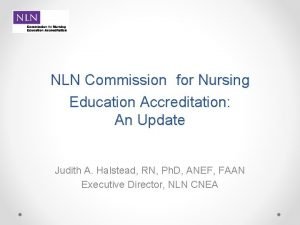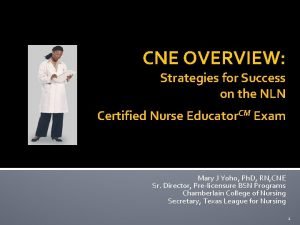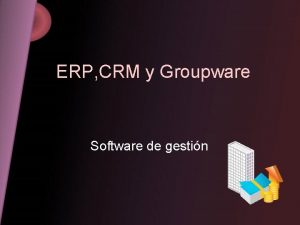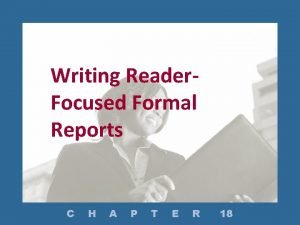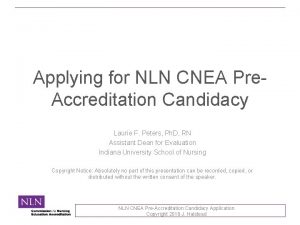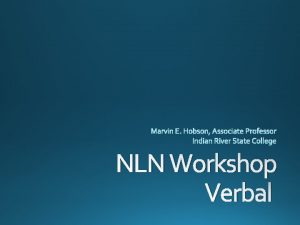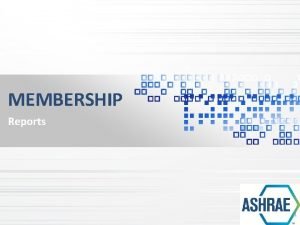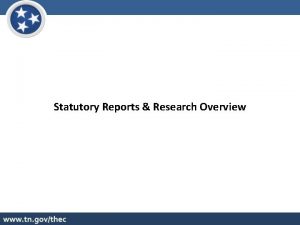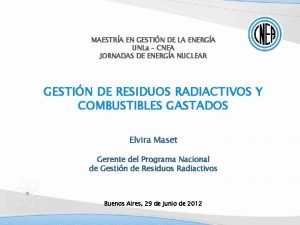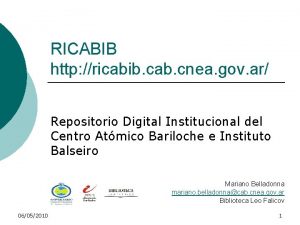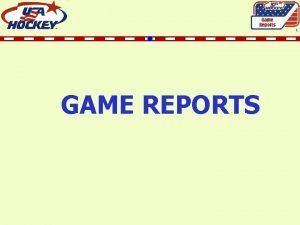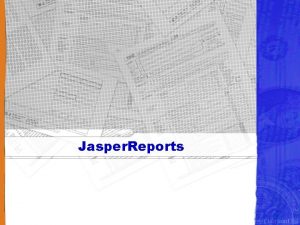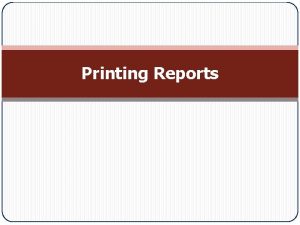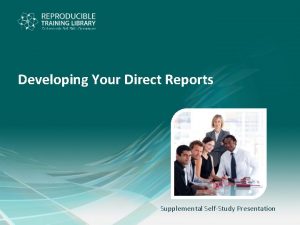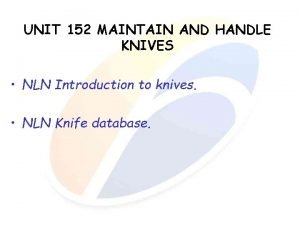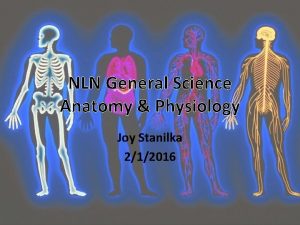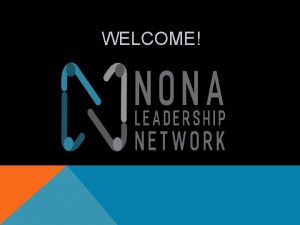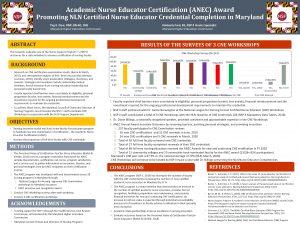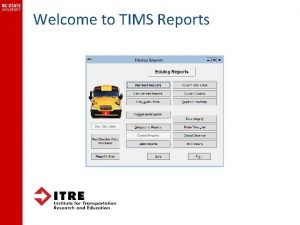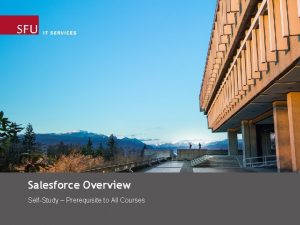NLN CNEA SelfStudy Reports An Overview of the


























- Slides: 26

NLN CNEA Self-Study Reports: An Overview of the Process Judith Halstead, Ph. D, RN, ANEF, FAAN Executive Director, NLN CNEA March 20, 2019

Objectives Ø Explain the purpose and role of the self-study report in the NLN CNEA accreditation process. Ø Describe the format and elements of the selfstudy report. Ø Describe strategies used to engage faculty and staff in the preparation of the self-study report.

What are Your Goals for Today?

Steps to the CNEA Accreditation Process Ø Determine program eligibility Ø Pre-accreditation candidacy application ØInitial Program Application Subcommittee review ØBOC Decision Ø Self-study report process Ø On-site program evaluation visit Ø Review of the program ØProgram Review Committee Ø BOC Decision

Purpose of the Self-Study Report Ø Reflect the program’s accomplishments and areas for improvement Ø Document the program’s self-assessment of compliance with accreditation standards and quality indicators Ø Provide a framework of evidence to be used by the on-site program evaluators to guide their peer review of your program ØEvaluators will verify, clarify and augment the selfstudy report

Self-Study Report Format Ø Document length (excluding appendices) ü 100 pages maximum for one program ü 150 pages maximum for two programs ü More than two programs, contact CNEA Ø Font size 11 point; Calibri for narrative text Ø Tables may use font size 10 point – the use of tables is encouraged as an effective way to share data with reviewers Ø 1” margins, double spaced

Self-Study Report Format Ø Organized by standards and quality indicators Ø Data sheet (use template provided by CNEA) Ø Executive Summary, not to exceed 2 pages, located at the front of the document Ø At the end of each standard, summarize program strengths and areas for improvement

Self Study Format – Appendix Ø At a minimum the following five elements are required to be included in the appendix: ü CV of chief academic nurse administrator ü Faculty profile table listing each faculty by name, with credentials, FT/PT status, rank/position title, certifications, and area of teaching responsibilities ü Institution and program organizational chart ü Systematic evaluation plan ü Curriculum sequencing plans for each program and track Ø Include any additional documents that you consider important to representing your program to the reviewers

Keys to Addressing Standards: An Overview Use the self-study report to systematically address each quality indicator identified within each of the five accreditation standards. NOTE: Quality indicators should reflect the overall essence of the standard you are addressing – read the opening paragraph statement for each standard, making note of the context and concepts exemplified in that statement. Each standard is more than the sum of its quality indicators. Final accreditation decisions are based on the program’s ability to demonstrate that the standards have been met.

Keys to Addressing Standards: An Overview (continued) Ø Focus your writing on highlighting how the quality indicators are of critical importance in contributing to your program’s quality and integrity, allowing the program to meet its mission and goals. Ø As the NLN CNEA accreditation process is grounded in achievement of outcomes, inclusion of outcome evidence or documentation is critical in assessing the degree to which each standard is being met. Ø Discussions within the text of the self-study report should reflect the evidence you are presenting either within the self-study narrative or accompanying appendix.


Guidelines for Preparing a Self-Study Report – A Step-by-Step Approach

Step One – Identify Major Players Ø Identify the individual to assume responsibility for coordinating all self-study activities Ø Helpful skills for the coordinator: ü ü ü Knowledge of the nursing program(s) Knowledge of unit and program policies and practices Comfort with the accreditation process Knowledge of where critical documents are located Knowledge of the implementation of the program’s systematic evaluation plan (SEP) ü Time management skills; attention to details ü Team facilitator ü Writing skills; ability to conceptualize

Step One (continued) Ø Identify key individuals that can manage the drafting of particular standards and form the Steering Group for the self-study report Ø It is helpful to have a lead individual for each of the five standards Ø Individuals need to be knowledgeable about the concepts contained within the standard being managed

Step Two – Strategy Meeting of Steering Group Ø Suggested Agenda Items: ü Identify documents/materials/sources for critical information needed for each standard and quality indicator ü Identify information gaps and ways to fill gaps ü Determine assignments and additional supports ü Establish a timeline/Program Evaluation Review Technique (PERT) chart for completion of all activities ü Decide what evidence to include in the self-study, what to place in the on-site resource room, and what to make available online ü Schedule regular meetings ü Plan for involving and informing faculty, students, staff, community of interest, and administration

Step Three – Engaging the Faculty Ø It is an expectation that faculty be involved in developing the self-study report Ø Staff should also be involved as appropriate Ø Examples of activities include: ü ü ü Collecting and assembling evidence documents Drafting wording related to standards and quality indicators Identifying program strengths and areas for improvement Contributing information to charts and tables Gathering student work demonstrating students’ ability to meet course and program expectations/outcomes ü Facilitating on site program evaluator visits to practice settings ü Preparing students for their role in accreditation

Step Four – Drafting the Self Study Ø Start early – it always takes longer than anticipated Ø Systematically address each quality indicator by outlining essential information to include Ø Substance is important! Ø Note places where documents are needed to provide supporting evidence – pictures (tables) are often worth a thousand words Ø Identify those who have the critical information needed Ø Contact people regarding specific information needed, how it should be formatted, and by what date it should be provided

Step Five – Finishing the Working Draft of Each Standard Ø Set a deadline for the completion of the first draft ü Make sure you have addressed the each standard’s quality indicators to your satisfaction ü Double check that you have included the documents referenced in your dialogue and organized as part of an evolving appendix to the self-study ü Check to make sure that the required writing requirements and format as stated by the NLN CNEA are evident – remember there are page limits! ü Hand off work to self-study leader/coordinator for compilation of total draft

Step Six – Pulling it All Together Ø Compile each standard into the self-study report; if you are addressing more than one program, be sure you clearly identify evidence for ALL programs Ø Compile the appendix as supporting evidence to the self-study document Ø Read through to determine content/areas that are missing, overlap or contradictory information, and any areas in need of enhancement Ø Distribute this working draft to designated others for their review and feedback Ø Set clear deadlines for responses

Step Seven – Finalizing the Report Ø Have at least one external person read the report in final draft form for clarity, syntax and completeness Ø Assure there is reference agreement between the report’s narrative and appendix Ø Ensure there is an Executive Summary and TOC Ø Determine how final document will be reproduced and distributed

CNEA Contacts Ø accreditation@nln. org Ø www. nln. org/cnea Ø Lusetha Rolle – lrolle@nln. org – 202 -909 -2526 Ø Judith Halstead – jhalstead@nln. org – @Dr. JHalstead – 202 -909 -2487 Ø Betsy Frank – bfrank@nln. org – 202 -909 -2542

Upcoming Workshops – Washington, DC Ø August 23, 2019 -Writing Your Program's NLN CNEA Self-Study: Process And Outcomes Ø October 11, 2019 -The ABCs of Developing Program Systematic Evaluation Plans for NLN CNEA Accreditation Ø November 15, 2019 Preparing Your Program for NLN CNEA Accreditation: Beginning the Journey

Website for Workshop Information and Registration http: //www. nln. org/accreditation-services/nln-cneaworkshops-and-webinars/nln-cnea-workshops

Upcoming Webinars Ø Please check our website for dates and times of webinars on: – NLN CNEA Focus on SEP Feedback – NLN CNEA Webinar Series: Focus on the NLN CNEA Standards of Accreditation http: //www. nln. org/accreditation-services/nln-cneaworkshops-and-webinars/nln-cnea-webinars

Pre-Summit Conferences – Washington, DC These will be announced soon.

 Cnea accreditation
Cnea accreditation Nln cne exam
Nln cne exam Suite crm ventajas y desventajas
Suite crm ventajas y desventajas Difference between formal and informal reports
Difference between formal and informal reports 101012 bằng
101012 bằng Công thức tiính động năng
Công thức tiính động năng Tỉ lệ cơ thể trẻ em
Tỉ lệ cơ thể trẻ em Lời thề hippocrates
Lời thề hippocrates Vẽ hình chiếu đứng bằng cạnh của vật thể
Vẽ hình chiếu đứng bằng cạnh của vật thể đại từ thay thế
đại từ thay thế Quá trình desamine hóa có thể tạo ra
Quá trình desamine hóa có thể tạo ra Các môn thể thao bắt đầu bằng tiếng bóng
Các môn thể thao bắt đầu bằng tiếng bóng Hình ảnh bộ gõ cơ thể búng tay
Hình ảnh bộ gõ cơ thể búng tay Sự nuôi và dạy con của hươu
Sự nuôi và dạy con của hươu Thế nào là mạng điện lắp đặt kiểu nổi
Thế nào là mạng điện lắp đặt kiểu nổi Dạng đột biến một nhiễm là
Dạng đột biến một nhiễm là Nguyên nhân của sự mỏi cơ sinh 8
Nguyên nhân của sự mỏi cơ sinh 8 Phản ứng thế ankan
Phản ứng thế ankan Gấu đi như thế nào
Gấu đi như thế nào Thiếu nhi thế giới liên hoan
Thiếu nhi thế giới liên hoan điện thế nghỉ
điện thế nghỉ Phối cảnh
Phối cảnh Một số thể thơ truyền thống
Một số thể thơ truyền thống Thế nào là hệ số cao nhất
Thế nào là hệ số cao nhất Trời xanh đây là của chúng ta thể thơ
Trời xanh đây là của chúng ta thể thơ Ng-html
Ng-html Hệ hô hấp
Hệ hô hấp
